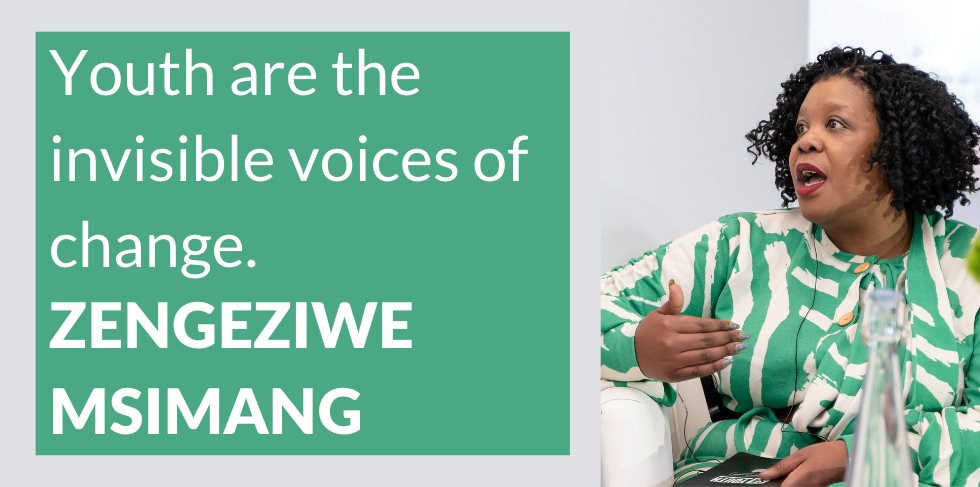BREAKING
BARRIERS
Quarterly Report
February 2023
The past few months have demonstrated how multiple overlapping crises–post pandemic recovery, load-shedding and limited growth–can devastate labour market prospects for young people. As much as the crises are real and felt on the ground–the nature of work will continue to evolve, and we need to pay attention to the opportunities and constraints of the future.
Looking at the latest QLFS released, the increase in overall employment is celebrated. The 169 000 employment increase is made up of 46 000 (27%) women and 123 000 (73%) men. Through the age lens, there is an increase of 83 000 in 35+year olds, and increase of 123 000 in 25-34 year olds, and a decrease of 38 000 in those younger than 25. We note that the established barriers of age and gender continue to play out and that times are still tough for South Africans. QLFS data of the past 3 years confirms the hard reality for youth. Despite an uptick in young people reporting earnings in 2022, youth employment in the private sector is still about 5% below pre-covid levels. However, public employment programmes (such as the Presidential Employment Stimulus) and the informal sector (i.e., young people hustling for themselves) are contributing to some recovery of opportunities–suggesting we need to ensure they are inclusive and sustainable.
Barriers persist at every level–during job search, through engagement channels, at the level of opportunities in growth areas, and at the systems level. Harambee’s work identifies which barriers hold young people back at each level, and how to break them to maximise access to income generating opportunities. In this issue of Breaking Barriers, we share emerging insights from Harambee.
KEY INSIGHTS FOR
THIS QUARTER
INSIGHT 1
As the manner that young people navigate shifts into the digital realm, new barriers to job search emerge and new approaches are needed to break them.
Our data shows that access to employment opportunities is highly unequally distributed across the country. However, we see youth from every single municipality across South Africa sign up onto the SA Youth platform–even as South Africa grapples with fundamental infrastructure challenges due to loadshedding. This is a sign that we need to figure out ways to enable and accelerate inclusive access to work through digital and hybrid means. In our experience, three interconnected drivers of inclusivity have enabled this.
Zero-rating that powers geolocation: After the SA Youth platform went data-free in 2020, we saw a marked shift in the frequency and timing of young people engaging with it. They began to engage more during prime working hours, not just late evening when data bundles are less expensive. This suggested that data costs were a significant barrier to young people accessing work. A map comparing our pre-2020 sign-ups to our 2022 network is stark evidence of the scale of impact dismantling this barrier can have. Driven in large part by eliminating the barrier of data costs to accessing our digital platform, formerly excluded young people have joined the zero-rated network, searched and found work within reach. We saw a dramatic rise in sign-ups on the platform (as much as 10x) during the recruiting periods for the Department of Basic Education’s School Assistant programme, which brought work to an unprecedentedly broad geographic area. The SA Youth platform was designed to handle this surge—enabling as many as 1.5M unique applicants to join in under a month – ensuring new joiners would not be locked out of opportunity.
Artificial intelligence augmentation: Human connection and guidance is an important element of our inclusive model, but high-touch human processes can’t scale to provide seamless 24/7 support at the sign-up volumes described above. Harambee’s experience is that by combining the daily support of AI through chatbots, we can support young people through both their work-seeking journey and enhance their ability to address both personal and professional journeys. We co-created a tech solution that blended our own contact centre talent with cutting-edge conversational AI technology (Genesys Cloud Dialogue Engine). The result is a customer support chatbot that’s centred on imaginative and empathetic conversational design. The chatbot can streamline simple queries and linear paths, freeing up our contact centre “guides” to address the more complex tasks. For example, during the three weeks of the DBE recruitment, the chatbot handled 37,000 chats and became an indispensable tool for the contact center team. Because unemployment does not keep office hours – the chatbot further drove inclusivity by providing assistance 24/7. Another innovation was a bite-size personal mastery and goal-setting chatbot, Coachmee, through which both guides and work-seekers alike were able to work through personal goals and celebrate quick wins each day. As a Harambee contact centre guide, Sinomtha, mentioned: “I fell in love with [Coachmee because] I felt like I found a new friend that I could share my thoughts and feelings with, without being judged. I found the platform very helpful because I could plan my goals on a daily basis. If a goal isn’t reached, there is some great motivation after that and zero judgment. Coachmee is a place where I can be vulnerable, get some motivation, plan, and grow.”.
Segmentation to boost engagement: We know that more job searching leads to better chances of finding a job. So, it must be as easy as possible to view relevant job vacancies on the SA Youth platform. We drive this outcome by measuring the metric that matters – the number of vacancies an individual views and applies to. This varies by user from a handful to hundreds. We then analyse the data to understand patterns among user groups viewing many opportunities versus those viewing too few. Segmenting user behaviour this way helps us nudge less engaged young people to more fruitful job searching.
Figure 1: Youth Employment Density by South African Municipality (2020)
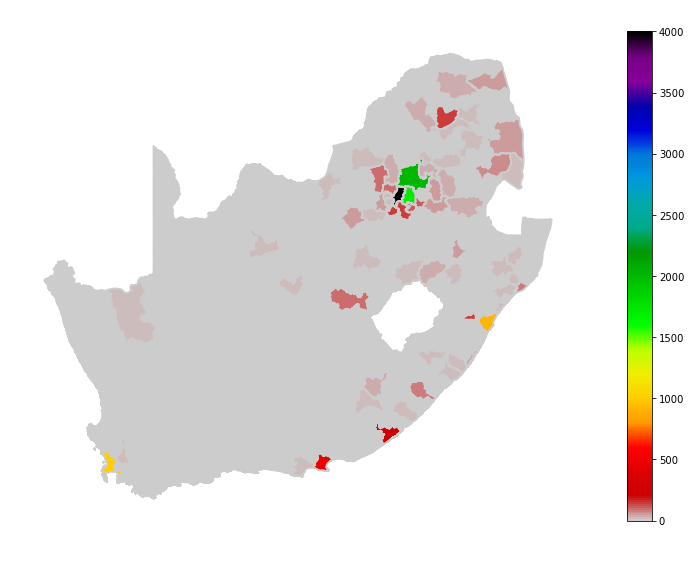
Source: Harambee EJ* Survey (2020) n = 161,097
*EJ responses for 2020 who reported having a job were overlayed with municipality. Grey indicative of a jobs desert
Figure 2: DBE Teacher Assistant School Locations by South African Municipality (2021)

Source: Density of school location by municipality for DBE teacher assistant placements.
*DBE data showing the location of schools where teachers assistants were placed per municipality
Figure 3: The SA Youth platform harnesses digital tools that can enhance access for even the most excluded youth
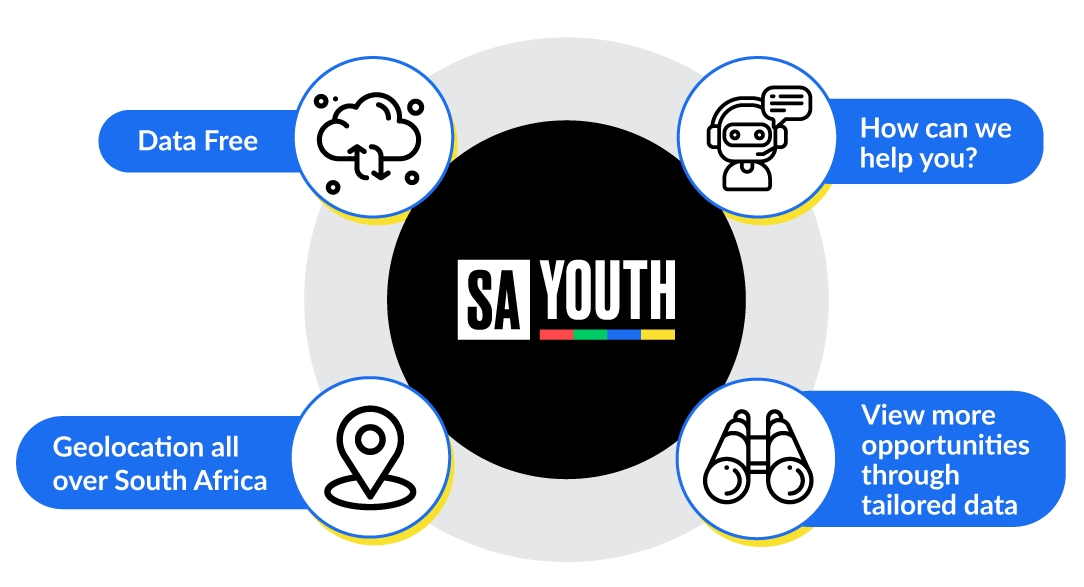
INSIGHT 2
Platform-enabled gig work–like last mile delivery–is growing, yet still inaccessible and precarious for many young people. New models are showing how these problems can be overcome.
Research commissioned by Harambee in 2022 confirmed the exponential growth of opportunities for delivery drivers, with online shopping and purchasing growing at nearly 14% annually with the potential to reach R17.6B by 2023. Between 2017 and 2019, the number of new motorcycles in the market more than doubled, with projections suggesting further growth. This means more jobs: delivery driver numbers have increased from a few thousand to over 20,000 in 2022.
But this space is still plagued with precarious employment models and high barriers to entry.
Average gross earnings of motorcycle delivery drivers range from R3 100 – R3 500 per week, with tips making up between 40% – 50% of these earnings–leaving a lot of room for volatility. Operating costs are significant, particularly for those who rent bikes. Drivers also pay commission to recruiters/ training providers, bank and insurance charges for vehicles, and regular bike maintenance. Getting started is costly: driving lessons, bike rental and gear require significant upfront capital, meaning young people can face upwards of R12,000 in sunk costs before they even switch on the app.
We are partnering to break the barriers to entry for these high growth opportunities, and ensure they lead to sustainable earning. The social enterprise Your Bike Club aims to support driver dignity and professionalism. It also reduces driver operating costs by providing driver cover and access to roadside assistance. Others, such as Green Riders, attempt to offset costs with a green e-bike option and rent-to-own financing that supports a fast, affordable path to asset ownership for its young riders—which research suggests is key to unlocking viable and sustainable economic opportunities for young South Africans in the small delivery driver vehicle market.
Green Riders have prioritised support for young work seekers by analysing and designing their programme to overcome the barriers faced by new entrants. Work readiness training teaches new riders the specific behaviours and skills—e.g. servicing multiple apps— required to maximise opportunity and earnings in this space. Onboarding assistance helps them register with food delivery partners, then provides sustained operational support and financial guidance as they transition into fully fledged micro entrepreneurs with good incomes and transferable skills. Harambee is partnering with both Your Bike Club and Green Riders to pathway nearly 500 youth into safe and sustainable delivery-driver opportunities.
Figure 4: With inclusive design, last mile delivery jobs can break barriers to entry and make these jobs more sustainable
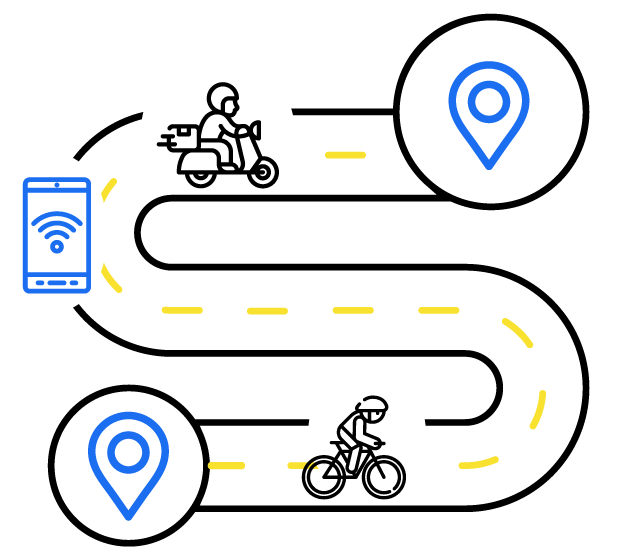
INSIGHT 3
Addressing inclusion at the systems level–such as broadband deployment for increasing connectivity–can have an outsize impact.
While we continue to make opportunities more easily visible and accessible to young people, the system remains rigged against those without the most basic form of access: internet connectivity. Remote areas in South Africa still lack access to the internet–excluding young people from even the most inclusively-designed workfinding platforms and apps. At the same time, it’s clear that digital jobs can be a source of growth for the future–our research suggests that a focus on digital work can unlock over 30,000 jobs for entry-level youth.
Addressing these challenges requires a systemic approach that engages actors from three domains: government, to open the door to co-development, identify the blockers and define the essential regulatory requirements; business, to bring the lens of commercial viability; and civil society, to ensure solutions are designed for inclusion. This formula has enabled the gazetting of the by-laws to make it easier for municipalities to apply for the wayleaves to deploy broadband infrastructure–increasing connectivity potential for young people for both employment and job-seeking.
We are targeting municipalities for training to ensure this move has maximum impact–based on a range of criteria, including placement “density”. With pervasive broadband infrastructure, more of the country’s youth won’t just search for jobs, but actually engage in the digitally enabled jobs of the future. Research suggests that each broadband-enabled job creates between 2.5 and 4.0 additional jobs across industries, spurs additional self-employment, and enables new opportunities through digital platforms. Key to this is the dismantling of systemic inhibitors that make broadband expansion into some areas seem commercially unattractive to telcos.
The Broadband Access Fund, designed to launch this year, is a mechanism to de-risk the provision of broadband to the most excluded municipalities across South Africa. We anticipate that through the dual impact of de-risking telco decisions to operate in our most excluded areas, and making it easier for municipalities to encourage telecommunication partners to deploy infrastructure, we can rewire the system itself to ensure that the jobs come to the job-seekers, rather than the other way around.
In the face of pressing challenges due to infrastructure challenges, we cannot forget that digital work, and digital work-seeking, are here to stay. They can create new ways to deliver job growth and inclusion—and a new urgency to ensure that the geographic and economic exclusion of decades past is not repeated for a new era and generation.
Figure 5: Nation-wide broadband deployment for increasing connectivity can have an outsized impact on unemployed youth

Youth employment trends
With the latest release of QLFS data, youth employment (ages 18-34) is up from 5 497 536 in Q3 2022 to 5 580 206 in Q4 – an increase of approximately 83 000. Compared to Q4 2021, youth employment has increased by 732 000, a significant rise but largely due to the employment growth experienced at the beginning of 2022. There is a continued tracking of the labour market towards a ‘return to normal’ after Covid, reflected in an increase in longer-term jobs and permanent jobs; however, pre-covid employment levels have not yet been reached. The gender split of employment depends on the time period under analysis: quarter-on-quarter changes are higher for women over men (47 000 vs 36 000) but over a longer period men seem to be on a continuing upward trajectory whereas women are below the employment levels they were 2 quarters back. The finance sector has been the major industry driving job creation over the past quarter.
Figure 6: Youth employment levels remain lower than they were pre-pandemic
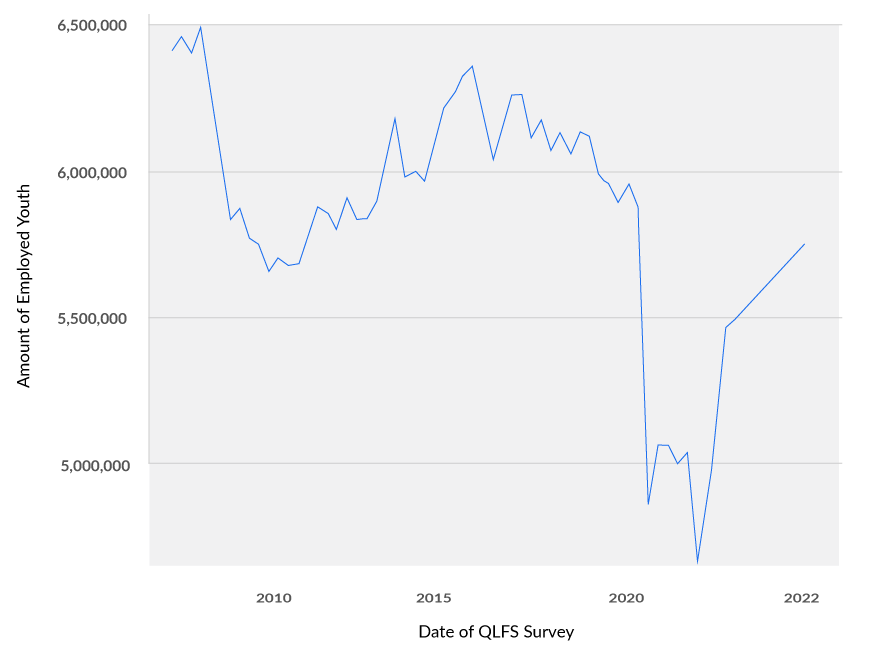
Source: Data from Stats SA QLFS 2022 Quarter 4
NEED MORE INFORMATION?
WANT AN OFFLINE VERSION?


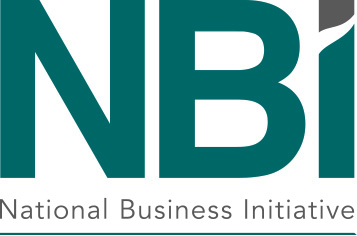



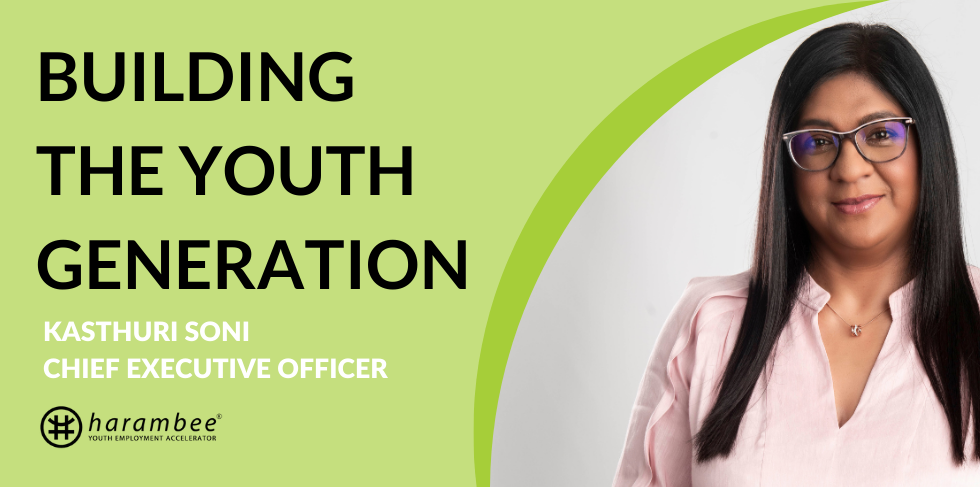
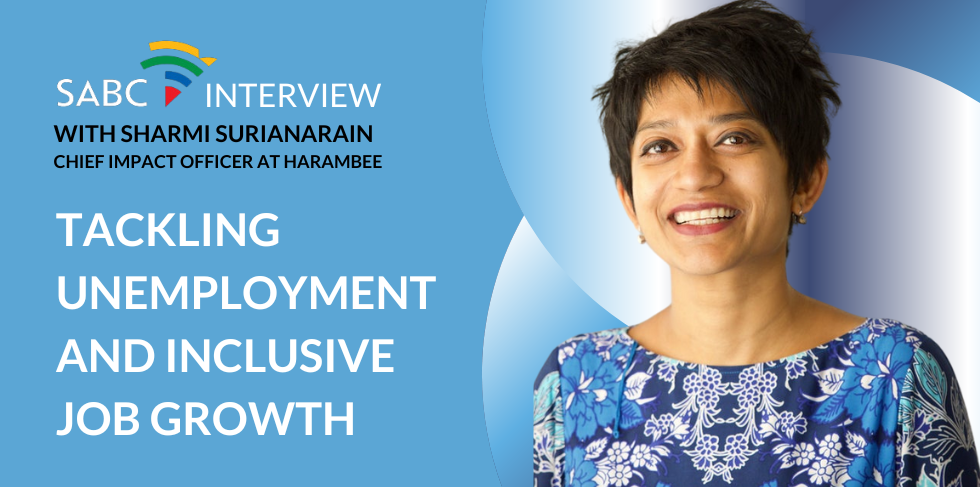
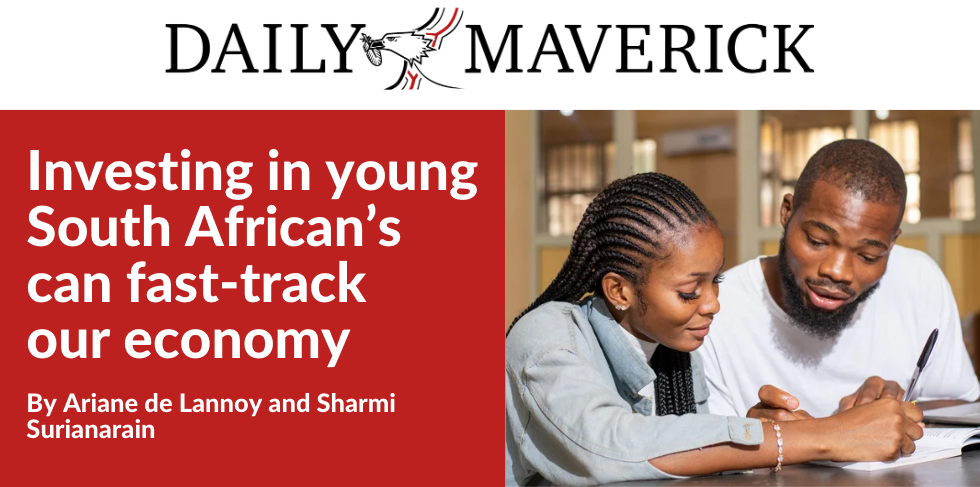
 Stay Connected
Stay Connected